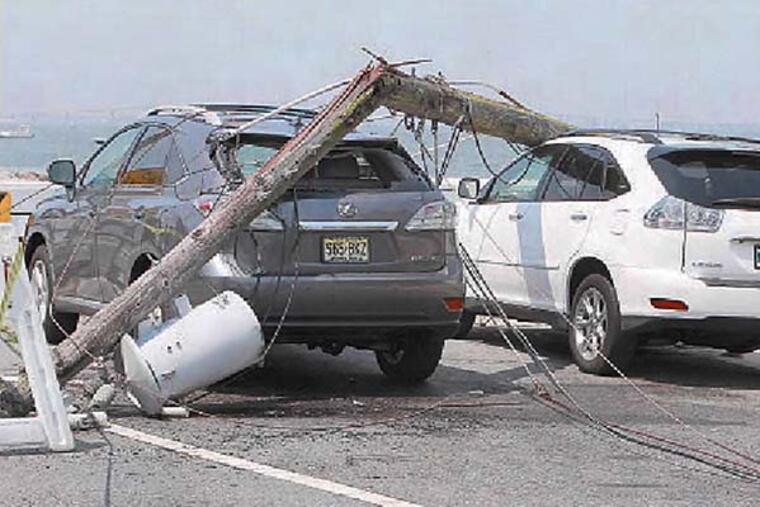More than 45 deaths, 4 million power outages, part of legacy of 'derecho'
The renegade winds plowed a 700-mile path all the way to the Shore five years ago and was blamed for more than 45 deaths and 4 million power outages.

Meteorologists said that such storms had been plowing the planet for time immemorial, and the term first was minted in 1880, but it's likely that no one around here could recall anything like this one since it ripped right through a population corridor.
In the afternoon of June 29, 2012, a cluster of storms mutated into what technically was a "mesoscale convective system," and commenced racing toward the East Coast at 60 mph in a bow-echo pattern.
By the time the so-called "derecho" reached the Jersey Shore, about 1 a.m. on June 30, a Saturday, it probably was packing wind gusts of 100 mph, according to Shore native Jim Eberwine, a retired National Weather Service meteorologist.
In its post-storm report, the weather service called it "a derecho of historic proportions."
It roared through 10 states for 700 miles, affecting parts of Pennsylvania, New Jersey. Measured gusts topped 80 mph.
In all 13 deaths were blamed directly on the winds, while an additional 34 heat-related deaths were reported in areas that had lost power during a continuing hot spell.
The government requirements for a "derecho" include a wind pattern that shows "chronological progression," and at least three separate reports of tornado-like damage about 40 miles apart.
This one more than qualified.
Three of the deaths occurred in New Jersey, and Atlantic County was particularly hard hit.
The storm did come with some warning. Severe-thunderstorm warnings had been posted, and the government's Storm Prediction Center, in Norman, Okla., issued a warning at 10:51 p.m. that derecho was heading our way.
But it is safe to say that no warning could convey the dangers of a rapidly moving storm of such ferocity.